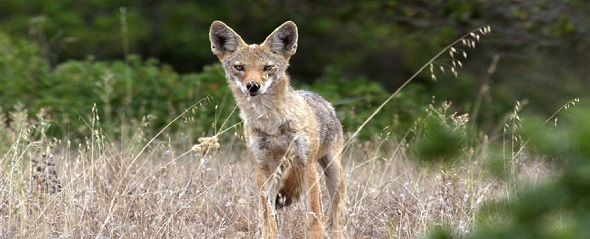
Fort Ord National Monument Wildlife and Plants
In the heart of California's Central Coast, the Fort Ord National Monument encompasses a sweeping landscape of vivid beauty and rich natural diversity. One of the few remaining expanses of large, contiguous open space in the increasingly developed Monterey Bay and Salinas Valley area, this area is a rolling landscape of maritime chaparral, oak woodland, grassland, vernal pool and wet meadow. Originating in the Pleistocene Epoch, ancient dunes provide the foundation for this landscape's unique array of plant and wildlife communities.
The diversity of vegetation helps ensure a long-season of annual wildflowers as well as showy floral blooms on chaparral shrubs. In the late winter and early spring, monument visitors are treated with colorful displays of baby blue-eyes, ceanothus blue blossom, Hickman's popcorn flower, buttercups, lupine, goldfields and sunflowers. In the summer and fall visitors see blooms of sticky monkey flower, nightshade, chaparral current and California golden rod. There are many rare plants at Fort Ord including the federally protected Contra Costa goldfields and Monterey spineflower.
Unique habitats support a tremendous diversity of mammals, birds, reptiles and amphibians. Many visitors to the national monument get a chance to see bobcats, coyotes, black-tailed deer, rabbits and ground squirrels. Mountain lions, California badgers, red fox and Monterey ornate shrews also share this coastal treasure. The skies are patrolled by vultures, red-tailed hawks, and kestrels while California quail, turkeys and road runners often scamper about on the ground. In the spring, don't be surprised to see California king-snakes, gopher snakes, garter snakes and occasionally rattlesnakes sunning themselves on the sun-baked roads. In the winter, you might see the federally protected California tiger salamander on the move towards vernal pools as they fill with water.

